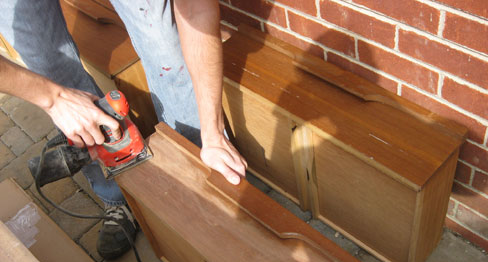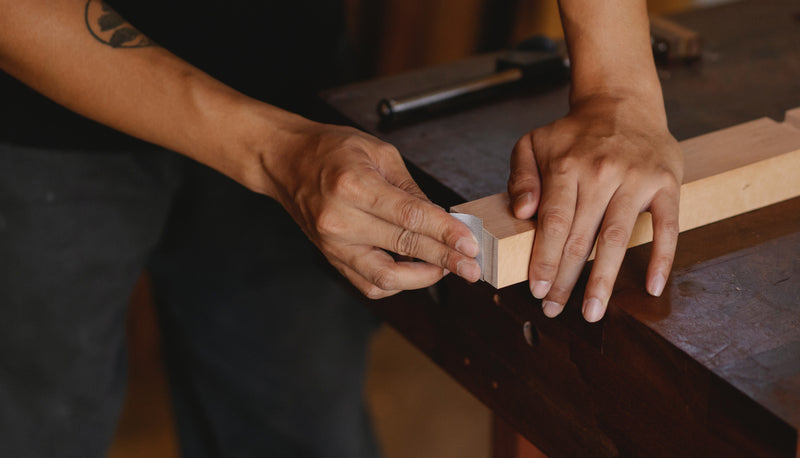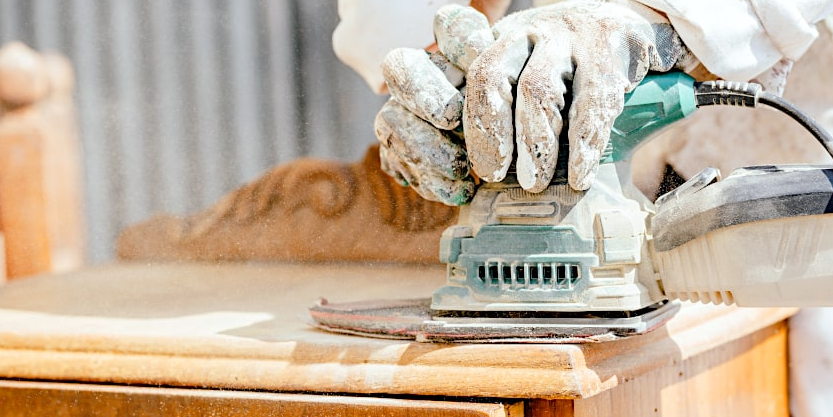Best Way to Sand Veneer and Lacquer
Veneer and lacquer are two popular finishes used in woodworking projects. While both provide a beautiful and durable surface, they require different approaches when it comes to sanding. In this guide, we will explore the differences between veneer and lacquer, and provide step-by-step instructions on how to properly sand both types of surfaces.

VENEER VS. LACQUER: WHAT SETS THEM APART?
Veneer and lacquer are two distinct types of finishes commonly used in woodworking. Understanding their differences is crucial to ensure proper sanding techniques.
Veneer is a thin slice of real wood that is typically applied to a less expensive wood or composite substrate. It allows the appearance of expensive wood species without the cost. Veneered surfaces are often used in furniture, cabinetry, and decorative applications. Since veneer is made of natural wood, it can be sanded and refinished multiple times. However, sanding veneer requires delicate handling to prevent damage to the thin layer of wood.
Lacquer, on the other hand, is a coating that is applied to a surface to enhance its appearance and provide protection. It is commonly used on furniture, cabinets, and other wooden surfaces. Lacquer can be clear or tinted, and it offers a durable and glossy finish. Unlike veneer, lacquer cannot be sanded and refinished easily. Sanding lacquered surfaces requires careful consideration to avoid damaging the coating.
HOW TO SAND VENEERED SURFACES:
Sanding veneer requires a gentle touch to avoid sanding through the thin wood layer. Here are the steps to effectively sand veneered surfaces:
- Assess the veneer: Check the condition of the veneer to identify any areas that require sanding. Look for scratches, dents, or imperfections that need to be addressed.
- Choose the right grit: Start with a fine-grit sandpaper, such as 180 or 220 gritsandpaper, to avoid aggressive sanding. You can gradually move to higher grits if necessary, but always be cautious not to remove too much material.
- Sand by hand: When sanding veneer, it is recommended to sand by hand rather than using power tools. This allows for better control and minimizes the risk of sanding through the veneer. Sand in the direction of the grain using light pressure.
- Focus on problem areas:Concentrate on sanding the areas that need the most attention, such as scratches or rough patches. Take your time and make gentle, even strokes.
- Inspect the surface: After sanding, carefully inspect the surface to ensure that it is smooth and even. If necessary, repeat the sanding process with a higher grit to achieve the desired finish.

CONFIGURATION OF A SEGMENTED PLATEN MACHINE FOR SANDING VENEERS:
For larger veneered surfaces, a segmented platen machine can be used to achieve consistent and efficient sanding. Here are the steps to configure a segmented platen machine for veneer sanding:
- Adjust the pressure:Set the pressure of the machine’s platen according to the thickness and condition of the veneer. Too much pressure can cause damage, while too little pressure may result in ineffective sanding.
- Select the right abrasive:Choose an abrasive belt or pad that is suitable for sanding veneer. Ensure that the grit is appropriate for the desired finish.
- Feed rate control: Adjust the feed rate of the machine to achieve the desired level of sanding aggressiveness. A slower feed rate may be necessary for delicate veneers, while a faster rate can be used for more durable veneers.
- Test and evaluate: Before proceeding with the entire surface, test the machine on a small, inconspicuous area of the veneer. Evaluate the sanding results and make any necessary adjustments to the settings.
- Sand the entire surface: Once the machine is properly configured, sand the entire veneered surface using the segmented platen machine. Monitor the process closely to ensure that the veneer is not being sanded too aggressively.
Monitor the process closely to ensure that the veneer is not being sanded too aggressively.
HOW TO SAND LACQUERED SURFACES:
Sanding lacquered surfaces requires a different approach compared to sanding veneer. Follow these steps to effectively sand lacquered surfaces:

- Prepare the surface:Clean the lacquered surface thoroughly to remove any dust, dirt, or debris. Use a mild detergent solution and a soft cloth to wipe the surface clean. Allow it to dry completely before sanding.
- Choose the right sandpaper: Select a fine-grit sandpaper, such as 320 or 400 gritsandpaper, for sanding lacquer. Finer grits are less likely to leave visible scratches on the surface.
- Sand gently: Use a sanding blockor sanding pad to sand the lacquered surface gently. Apply light pressure and sand in the direction of the grain. Avoid aggressive sanding that could remove the lacquer.
- Smooth out imperfections:Focus on smoothing out any imperfections, such as drips, runs, or brush marks, using light and even strokes. Take care not to sand through the lacquer.
- Inspect and finish:After sanding, carefully inspect the surface for smoothness. If needed, repeat the sanding process with a higher grit to achieve a finer finish. Once satisfied, apply a new coat of lacquer or other desired finish.
Conclusion:
Sanding veneer and lacquered surfaces require different approaches due to their distinct properties. Veneer should be handled delicately to avoid sanding through the thin wood layer, while lacquer should be sanded gently to avoid damaging the coating. By following the appropriate techniques and using the right tools and grits, you can achieve a smooth and flawless finish on both veneer and lacquered surfaces. Remember to take your time, inspect the surface, and make necessary adjustments to ensure optimal results.
评论
发表评论